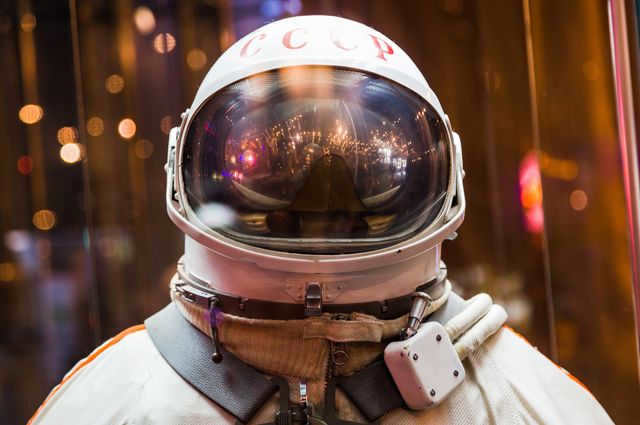
In Russia, there is a considerable number of believers in the so-called “moon landing hoax” theory, which claims that American astronauts never actually landed on the Moon, and that all the footage captured on the Earth’s satellite is simply a staged production orchestrated by Hollywood forces, with the involvement of renowned director Stanley Kubrick.
However, even before the emergence of the “moon landing hoax” theory, the Western world had its own narrative about “secret Soviet cosmonauts” who allegedly perished before Yuri Gagarin’s historic flight. Yuri Gagarin.
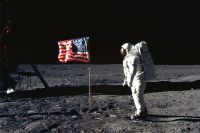
"Gone, deceased, concealed."
This theory is not openly discussed in Russia, as it challenges the pride of Russians. However, in Western countries, there are periodic publications about “secret Soviet cosmonauts” even today. These articles often appear on the eve of Cosmonautics Day.
After the USSR successfully launched the first satellite into orbit in 1957, there was speculation that humans would soon venture into space. In late 1959, the Italian media reported that the USSR had made multiple attempts to send a human into space using a ballistic missile. According to the Italians, all of these attempts ended in failure. The publications mentioned the names of the deceased pioneers of space exploration: Alexei Ledovsky, Sergei Shiborin, Andrei Mitkov, and Maria Gromova.
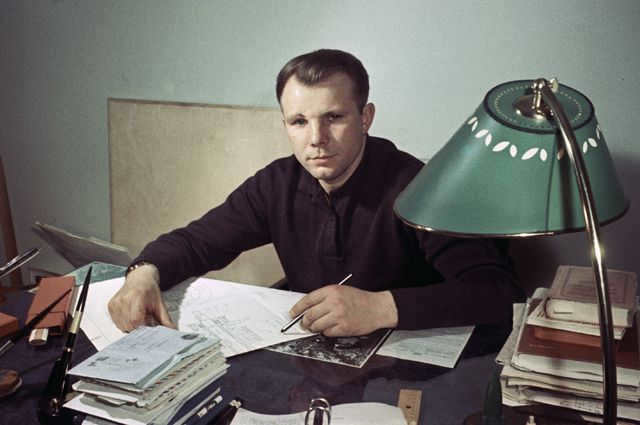
However, the true surge of such articles started after Yuri Gagarin’s historic flight. American and British journalists, citing reliable sources, asserted that Gagarin was not the first person to go to space or did not go to space at all!
Mystery as the Cause of a Rumor
Reports about the tragic deaths of Soviet astronauts were accompanied by launch dates, details of the accidents, and most importantly, the names of the deceased. As a result, the Western press claimed that over a dozen people had been buried.
The spread of these rumors was made possible by the extreme secrecy surrounding the Soviet space program. For instance, it is a well-established fact that failed launches in the USSR were either not disclosed or inaccurately reported. Therefore, when the Soviet interplanetary station Venera-1 failed to exit Earth’s orbit on February 4, 1961 due to a malfunctioning upper stage, a TASS report falsely claimed the “launch of a heavy satellite 01” and the successful completion of scientific and technical objectives. Interestingly, this February 1961 launch would later become the source of a new sensation in Italy: local radio enthusiasts would claim to have received signals that, when decoded, turned out to be the sounds of a dying man’s heartbeat.
The “covert journey and imprisonment” of aviator Ilyushin.
One of the most well-known “undercover astronauts” was Vladimir Ilyushin. Vladimir Ilyushin, the son of renowned aircraft engineer Sergei Ilyushin..
Ilyushin Jr. gained fame as a distinguished test pilot employed by the Sukhoi Design Bureau. In 1960, Vladimir Ilyushin, who set numerous global records while piloting cutting-edge aircraft, was honored with the prestigious title of Hero of the Soviet Union.
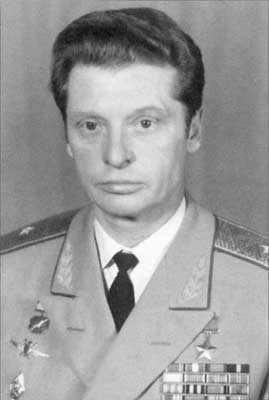
As reported by Western media outlets, it is claimed that Ilyushin took off from Baikonur aboard a Rossiya spacecraft on April 7, 1961. After completing three orbits, the cosmonaut lost consciousness and ground control brought the ship back to Earth in automatic mode. Unfortunately, the landing was unsuccessful, and the descent module ended up in China. The injured Soviet cosmonaut was then captured by Mao Tse-tung’s forces, who demanded that he disclose classified information about space exploration. Another version of the story suggests that Ilyushin actually landed in the USSR, but sustained severe injuries that made it impossible to present him to the public in that condition. As a result, a hastily selected senior lieutenant named Yuri Gagarin was showcased to the world with a smile on his face, while Ilyushin’s true fate remained concealed.
It was widely believed that Ilyushin was the most credible among all the “secret cosmonauts”. Some even claim that his name was included in the Guinness Book as the first cosmonaut of Earth.
However, in reality, Ilyushin was involved in a car accident in 1960, not in aviation or space-related incident. His car was hit by another car driven by a group of intoxicated individuals, resulting in serious injuries for Ilyushin. He was unable to continue his career in aviation. The Hero of the Soviet Union received extensive medical treatment. As part of his rehabilitation, he traveled to China, which led to the rumors about him being a “prisoner of Mao”. Despite the stories surrounding his “space feat”, Vladimir Ilyushin always maintained a sense of humor and eventually returned to work as a test pilot.
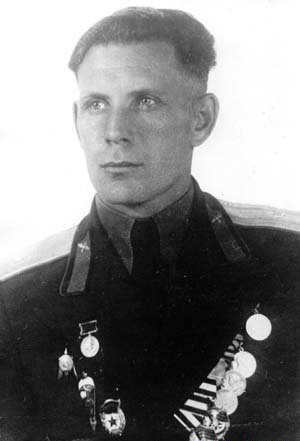
What happened to Peter Dolgov after his jump from the stratosphere
Among the classified Soviet cosmonauts, there is one particular test pilot who tragically lost his life: Pyotr Dolgov. However, his demise did not occur in outer space, nor did it happen before the historic flight of Yuri Gagarin.
Colonel Dolgov, a senior test instructor of parachute equipment at the USSR Air Force Research Institute, tragically lost his life on November 1, 1962. He was participating in an experimental parachute jump from the Volga stratosphere, descending from a staggering height of 28,600 meters. Despite the efforts of his partner, Yevgeny Andreev, who landed safely, Dolgov did not survive the descent. It was later discovered that Dolgov’s spacesuit was damaged when he left the nacelle of the stratostat, causing it to depressurize. The extreme altitude combined with the depressurization resulted in his immediate demise.
We have clarified the fate of both Ilyushin and Dolgov, but what about the remaining individuals mentioned?
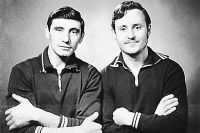
Testers become astronauts
A group of testers, including Gennady Zavodovsky, Ivan Kachur, Alexei Belokonov, Alexei Grachev, and Gennady Mikhailov, were discovered by domestic researchers to have worked as test technicians at the Institute of Aviation and Space Medicine in the late 1950s and early 1960s. Their role was to test various simulators and training techniques for real cosmonauts. Although their activities were not as secretive as those of the cosmonauts, articles about them appeared in Soviet media. In the West, they became known as the “secret cosmonauts” when stories were needed. Even years later, the test pilots would hear programs on Voice of America that spoke of their “tragic deaths.”
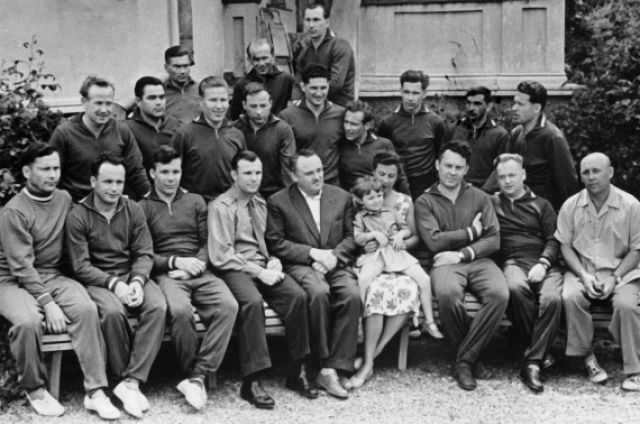
Currently, declassified documents, as well as memoirs from designers, engineers, and the first group of Soviet cosmonauts, have been published, shedding light on the early years of the Soviet space program. The complete journey and experiences of each of the initial twenty Soviet space pioneers can now be comprehensively understood.
“It’s entirely my responsibility. Don’t hold anyone else accountable”: the tragic demise of Valentin Bondarenko
Prior to Yuri Gagarin’s historic spaceflight, there was already a casualty among the first team of cosmonauts: Valentin Bondarenko, a young man of 24 years old. However, his untimely passing did not occur in the vastness of outer space but rather on solid ground.
It is now an indisputable fact that Yuri Gagarin was unequivocally the pioneer astronaut of planet Earth. Nevertheless, this does not signify the ultimate demise of the legends. Numerous individuals in our nation persist in their belief, despite the concrete evidence, that the Americans never set foot on the lunar surface.
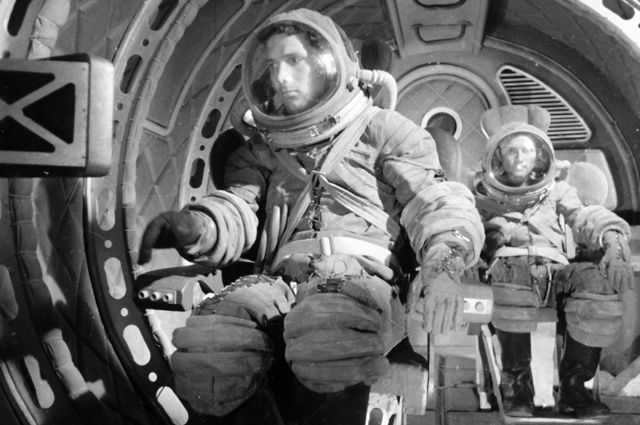
The period from the spring of 1961 to the spring of 1965 marked a significant milestone in Soviet manned cosmonautics, often referred to as the “golden age”. Over the course of eight flights, the USSR achieved numerous groundbreaking accomplishments in space exploration. These included the first-ever human space flight, the first daily flight, the first simultaneous flight of two spacecraft, the first female cosmonaut in space, the first three-person crewed spacecraft, and even the first spacewalk. These remarkable achievements firmly established the Soviet Union as a leader in space exploration.
A total of eleven Soviet cosmonauts participated in these historic missions, which consisted of six Vostok flights and two Voskhod flights. These brave individuals became household names not only in the Soviet Union, but also across the globe, symbolizing the incredible achievements of Soviet cosmonautics.

Time is unforgiving. Today, out of the 11 individuals who were part of the esteemed “star team”, only two remain alive.
Yuri Gagarin
After successfully completing the rigorous selection process, on April 12, 1961, Yuri Gagarin embarked on a space journey aboard the “Vostok-1” spacecraft, instantly capturing the hearts of the entire world.
The 27-year-old Soviet officer had the desire to meet African tribal leaders and even the Queen of England. Gagarin embarked on numerous international trips, serving as a tremendous advertisement for the USSR.
However, Yuri Alekseevich himself did not wish to become a monument. He continued his studies at the academy and had plans to venture into space once again, contributing to the development of new spacecraft.
In April 1967, Gagarin took on the role of understudy for cosmonaut Vladimir Komarov in preparation for the upcoming mission of the state-of-the-art Soyuz 1 spacecraft. Unfortunately, Komarov’s flight ended in a tragic accident, which led to discussions among Soviet officials about whether Gagarin should be exempted from future missions. However, Gagarin vehemently resisted any attempts to halt his career as a pilot and astronaut.
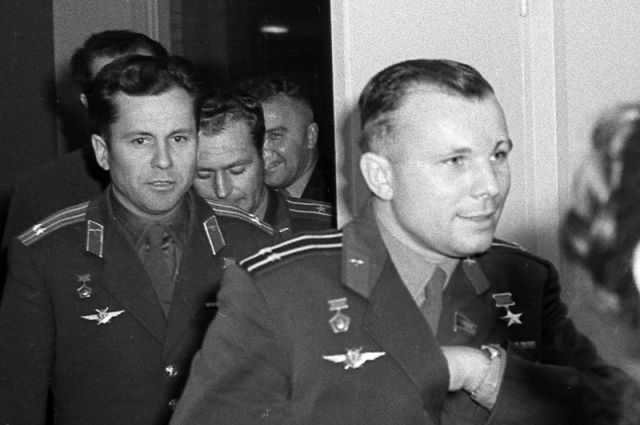
Tragically, on March 27, 1968, Yuri Alexeyevich Gagarin lost his life in a plane accident while participating in a training flight alongside instructor Vladimir Sereginy. It was a devastating event as the world mourned the loss of the first cosmonaut who was just 34 years old at the time of his death.
On August 6, 1961, the Vostok-2 spacecraft, commanded by German Titov, took off from the Baikonur Cosmodrome.
Titov’s mission was significantly more intricate than Gagarin’s. He completed 17 maneuvers, spending over a day in orbit, experiencing the complete wonder of weightlessness for the first time.
During the time of the flight, Titov was still under 26 years old, but he performed his task flawlessly. However, German Stepanovich often reiterated that “only the first is remembered.”
The chief instructor of the original group of cosmonauts, General Kamanin, believed that Titov was more prepared for the first flight than Gagarin. Therefore, it was more logical to assign him a more complex mission.
In 1968, German Titov graduated from the Zhukovsky Air Force Engineering Academy, defending his thesis on the same day as Gagarin. In 1969, Titov took charge of the 4th division at the Cosmonaut Training Center, where pilots were trained for the Spiral aerospace system. Unfortunately, this ambitious project never came to fruition.
German Stepanovich had a long career in the space industry. He served as the deputy head of the Center for Military Spacecraft Control under the Office of the Chief of Space Vehicles (OCSM) in the USSR Ministry of Defense. Additionally, he held the position of the first deputy head of OCSM for experimental design and research work. Titov also chaired several state commissions responsible for testing space rocket systems. In 1999, he became the head of the Russian Federation of Cosmonautics.
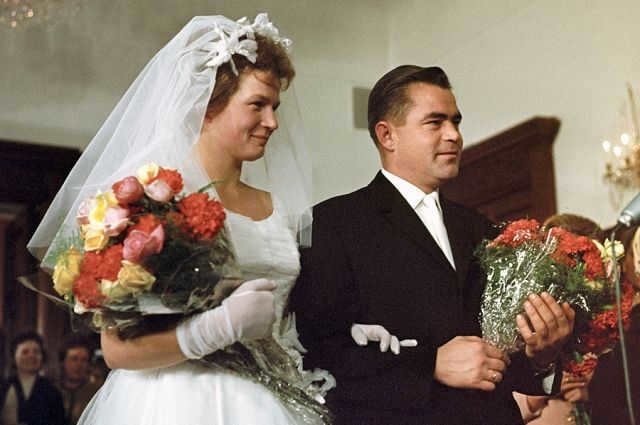
German Titov, who was a member of the CPRF faction, served as a deputy of the Supreme Soviet of the USSR and later as a deputy of the State Duma for three terms. Unfortunately, he passed away in September 2000 at the age of 65 due to a heart attack.
Andriyan Nikolaev
On August 11, 1962, Andriyan Nikolaev, who was 32 years old at the time, entered orbit aboard the Vostok-3 spacecraft.
During his time in space, which lasted 94 hours and 22 minutes, Nikolaev made history by becoming the first person to work in orbit without a spacesuit. This groundbreaking feat was part of an experiment to develop an interceptor spacecraft, conducted in conjunction with Pavel Popovich’s Vostok-4.
Following a successful return to Earth, Nikolaev was appointed as the commander of the cosmonaut team.
In 1970, Andriyan Nikolaev set another record when he embarked on a 17-day mission aboard the Soyuz 9 spacecraft, accompanied by Vitaly Sevastyanov.
Following the successful missions of Nikolaev and Sevastyanov, it became evident that astronauts in space required specialized training in order to safely return to Earth.
Andriyan Nikolaev, after completing his second spaceflight, transitioned into a new role as the first deputy chief of the Gagarin Cosmonaut Training Center in 1974.
In 1963, Nikolaev entered into matrimony with Valentina Tereshkova. Their union marked the first “space marriage” in history, which lasted for 18 years and produced a daughter named Elena. However, in 1981, the couple decided to separate and Nikolaev did not remarry.
In the summer of 2004, Andriyan Nikolaev returned to his hometown of Chuvashia, where he served as the chief referee for the V All-Russian Summer Rural Sports Games.
The Games had already concluded, and on July 3, Nikolaev was making his way back to his hotel after the concluding press conference. Unfortunately, he suffered a heart attack en route, and despite the best efforts of medical professionals, they were unable to save him. Andriyan passed away less than two months before his 75th birthday.
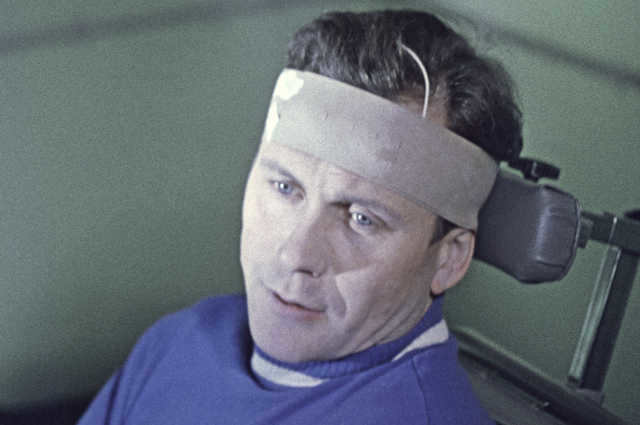
Pavel Popovich
Pavel Popovich piloted the “Vostok-4” spacecraft, which was launched on August 12, 1962. He completed a joint flight with Andriyan Nikolayev’s Vostok-3, but landed earlier due to the flight program. After that, Popovich continued to prepare for future missions, including the “lunar program”.
He had to wait for 12 years for his next flight. In 1974, he flew on the Soyuz-14 spacecraft with Yuri Artyukhin and docked to the Salyut-3 orbital station. This station was part of the Almaz project, a military orbital station. During their 15-day stay on Salyut-3, Popovich and Artyukhin successfully completed the flight program.
Pavel Popovich was employed in different roles at the Cosmonaut Training Center until the late 1980s. During the 1990s, he assumed leadership of the Charity Foundation, which was named after the pioneering astronaut Yuri Gagarin, and was highly involved in public endeavors.
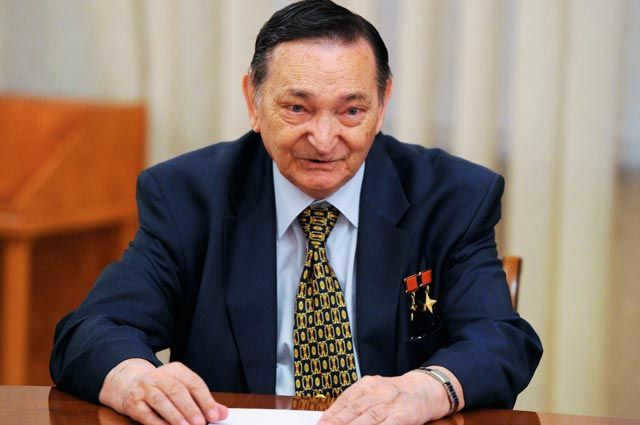
The individual from the Kiev area, who was known by the call sign “Berkut” during his time in space, was fortunate enough to not experience the aftermath of EuroMaidan and the subsequent tension between Russia and Ukraine. The astronaut passed away in Crimea in 2009 at the age of 78 due to a stroke.
Valery Bykovsky set a record for the longest flight in the history of space exploration when he flew on Vostok-5 from June 14 to June 19, 1963. To this day, no one has spent more time alone in space than Bykovsky.
Despite these remarkable achievements, Bykovsky’s accomplishments were overshadowed by the parallel flight of Vostok-6, piloted by Valentina Tereshkova.
Bykovsky was always a humble man, never seeking attention for himself. However, Yuri Gagarin once predicted that Bykovsky would surpass his colleagues in the first group of cosmonauts in terms of flight duration.
Gagarin’s prediction came true. Valery Bykovsky went on to make two more space flights. In September 1976, he flew on Soyuz-22 alongside Vladimir Aksenov, and in August-September 1978, he embarked on the Soyuz-31 mission and visited the Salyut-6 station with the first German cosmonaut, Sigmund Yen.
Bykovsky worked at the Cosmonaut Training Center until 1988, after which he spent two years leading the House of Soviet Science and Culture in Berlin.
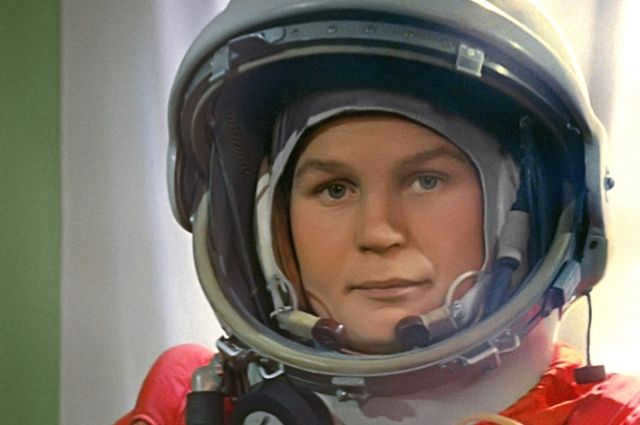
Valery Fedorovich did not engage in public activities in his later years, instead dedicating his time to his family and the upbringing of his grandchildren. The twice-decorated Hero of the Soviet Union passed away on March 27, 2019 at the age of 84.
Valentina Tereshkova
Valentina Tereshkova, the first female cosmonaut, made her historic flight in June 1963 aboard the Vostok-6 spacecraft. The mission lasted 2 days, 22 hours, and 51 minutes.
The success of Tereshkova’s flight continues to be a topic of debate. Some argue that she performed better than her male counterparts, while others believe that her experience led the Soviet space program to conclude that women should not be involved in spaceflight.
Tereshkova remained part of the cosmonaut squad until April 1997, when she reached the age limit and retired. Since then, she has been actively involved in social and political activities. From 1968 to 1987, she served as the head of the Committee of Soviet Women and participated in party congresses and the Supreme Soviet of the USSR. Currently, Tereshkova serves as a deputy in the State Duma.
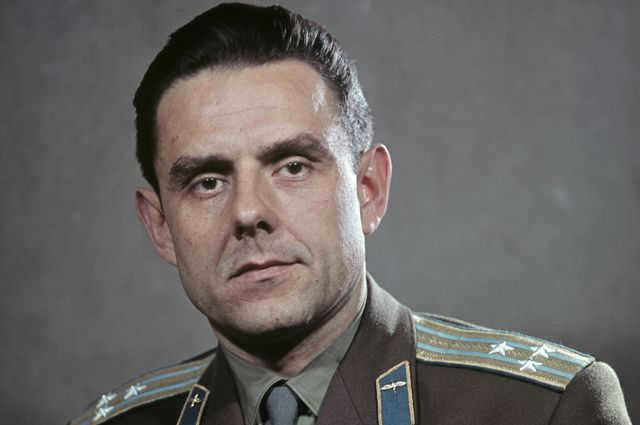
Valentina Tereshkova is the sole female in the world to have embarked on a solo space journey.
Vladimir Komarov
On October 12, 1964, the globe was captivated by a groundbreaking event – the Soviet Union successfully launched a three-seat Voskhod spacecraft. The Americans were taken aback: the Russians had once again taken the lead by developing a new spacecraft.
In actuality, the Voskhod was an upgraded version of the Vostok, in which, thanks to the ingenuity of the team led by Sergei Korolev, they were able to accommodate three individuals instead of one.
To achieve this, they had to sacrifice astronaut ejection seats and spacesuits. Voskhod-1 commander Vladimir Komarov understood the risks involved better than anyone else.
Komarov came to the cosmonaut squadron from the State Red Banner Research Institute of the Air Force, where he was involved in testing new aviation equipment.
Komarov arrived at the Air Force Research Institute after already serving as a fighter pilot.
Sergei Korolev regarded Komarov as the most knowledgeable in the first squadron in terms of engineering. He extensively studied all matters pertaining to space technology.
The Voskhod-1 mission lasted for 24 hours and ended with success. Perhaps this successful experience influenced the decision of the space program management to choose Vladimir Komarov as the pilot for the Soyuz-1.
Unlike the Voskhod, the Soyuz was truly a brand new spacecraft, designed with the “lunar program” in mind.
Komarov understood better than anyone else that the “Soyuz-1” was still in its early stages and objectively not fully prepared to handle the most complex tasks. Nonetheless, he did not back down from the mission.
“Soyuz-1” was launched on April 23, 1967, carrying Komarov as the cosmonaut. During the mission, he encountered numerous system failures, which raised doubts about his safe return to Earth.
Komarov demonstrated his exceptional professionalism by successfully guiding the spacecraft for landing. However, due to the malfunctioning parachute system, he was unable to handle the physical challenges.
Tragically, Vladimir Komarov lost his life on April 24, 1967, during the crash landing, making him the first Soviet cosmonaut to die during a space mission. He was 40 years old.
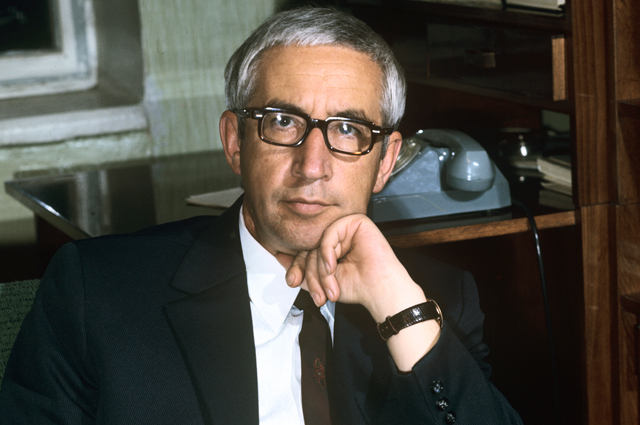
Konstantin Feoktistov
When World War II broke out, Konstantin Feoktistov, known as Kostya, served as a scout. Unfortunately, during one of his missions, he was captured by the Germans. However, he miraculously managed to escape and survive.
After the war, Feoktistov enrolled at Bauman Moscow State Technical University and started working at a research institute alongside Mikhail Tikhonravov, a renowned rocket designer. He later joined Sergei Korolev’s Design Bureau No. 1, where he played a significant role in the development of the first artificial satellite, as well as leading the design of the Vostok spacecraft.
After the flight, he became the chief designer for various spacecrafts such as Soyuz, Soyuz T, Soyuz TM, Progress, Progress-M, as well as the Salyut and Mir orbital stations.
In 1964, Feoktistov was chosen to go into space despite not being a member of the cosmonaut team. The first crew of three included a civilian engineer and a doctor.
Feoktistov managed to surpass other candidates and eventually flew on the Voskhod-1.
Konstantin Petrovich remained in the cosmonaut team until 1987, but never had another opportunity to go into orbit, although he came close to a second flight in the early 1980s. Unfortunately, his health did not pass the training stage.
Until 1990, he served as the deputy general designer of NPO Energia. Konstantin Feoktistov also spent many years teaching at his alma mater, Bauman Moscow State Technical University.
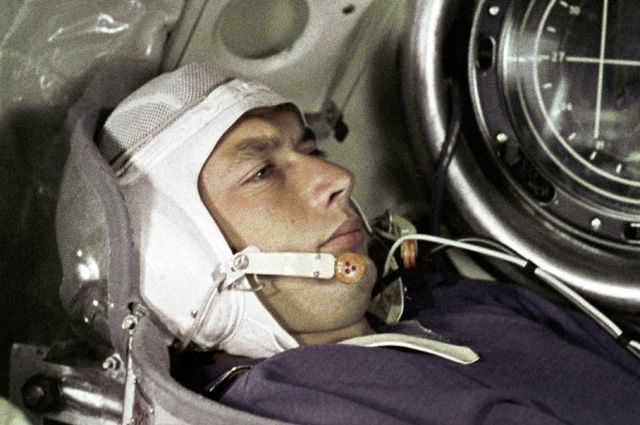
Boris Yegorov, who was the son of a renowned neurosurgeon, followed in his father’s footsteps. However, during his time at the institute, he became captivated by a newly emerging field – space medicine. While still a student, he began working as a laboratory assistant in this area, and after graduating, he devoted himself entirely to it.
By the time of his space mission, he had already published 10 scientific papers and was nearing completion of his PhD thesis on “Certain characteristics of afferent connections of vestibular nuclei neurons.”
Boris Yegorov’s Legacy
Unfortunately, Boris Yegorov passed away in November 2009 at the age of 83.
Egorov was chosen to join a team of physicians who were getting ready for a journey into space, although he was not initially seen as one of the top candidates. However, in the end, the decision was made in his favor.
After his experience on Voskhod-1, he went back to his research duties.

A good-looking man, Egorov had a knack for capturing the hearts of women. He was married to two famous actresses, Natalia Fateyeva and Natalia Kustinskaya. His first marriage lasted for six years, while his second marriage lasted for twenty.
In addition to his fascination with the opposite sex and his scientific pursuits, Boris Egorov had a passion for speed. He was among the first in the USSR to own a personal foreign car – a Buick Electra. Friends remember him as an excellent driver who had a need for speed but managed to avoid accidents. Surprisingly, at the age of 40, he developed an interest in motocross and began collecting motorcycles for racing.
The collapse of the Soviet Union also affected Egorov’s life. The funding for scientific research, particularly in the field of biotechnology and space medicine, was severely limited. As a result, he made the decision to venture into the business world.
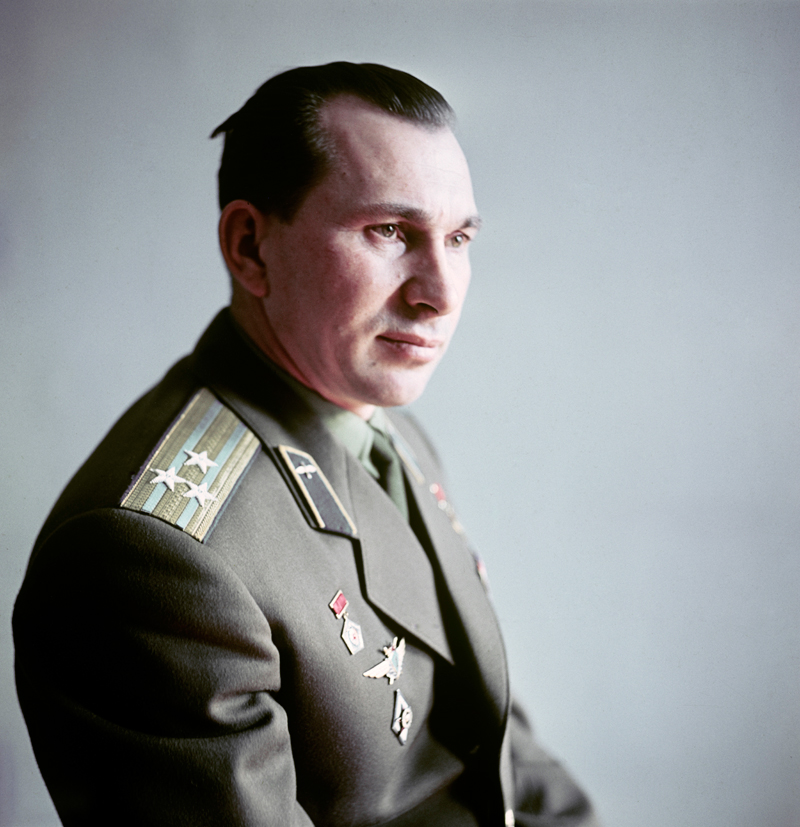
Pavel Belyaev
Among the group of Soviet cosmonauts, Pavel Belyaev held the distinction of being the oldest in terms of age, the highest in rank as a major, and the leader of the squadron. His younger colleagues would address him using his first name and patronymic, Pavel Ivanovich.
In August 1961, Belyaev suffered a broken leg during a parachute jump landing, which forced him to take a year-long break from training.
Many thought this would mark the end of Belyaev’s space career, but he displayed immense determination and resilience. His expertise became invaluable during the preparation for the Voskhod-2 mission in 1965, which involved a planned spacewalk.
Given his level-headedness and composure, Pavel Belyaev was chosen as the mission commander, while Alexei Leonov would be the one to venture into space. Belyaev’s role was to ensure a level-headed approach and temper the enthusiasm of the impulsive Leonov.
Consequently, the team successfully tackled the mission with flying colors, and subsequently triumphed over a sequence of exceptional circumstances, culminating in a touchdown in the secluded taiga.

Pavel Belyaev tragically and absurdly passed away on January 10, 1970, at the age of 44. His death was not related to astronautics, but was caused by body intoxication from purulent peritonitis.
Alexei Leonov
Alexei Arkhipovich Leonov is one of the most renowned pioneers of space exploration. While much has been written about his historic flight on the “Voskhod-2,” his subsequent biography is not often discussed.
For instance, it is not widely known that Leonov was a participant in the Soviet “lunar program” and passionately advocated for the country’s leadership to take the risk and give the “go-ahead” for the mission.
In the summer of 1971, Leonov, along with Valery Kubasov and Peter Kolodin, was slated to embark on an expedition to the groundbreaking orbital space station “Salyut-1.” However, at the eleventh hour, the crew of the Soyuz-11 spacecraft was replaced with a backup crew due to Kubasov exhibiting signs of a serious illness (which was later determined to be a mistake). Tragically, the replacement crew perished upon their return to Earth.
Before 1991, Alexei Leonov held the position of deputy head at the Cosmonaut Training Center. Following his retirement, Leonov engaged in various business ventures and worked to popularize space exploration. Additionally, Leonov is renowned for his artistic talents.
Alexei Leonov will celebrate his 85th birthday in May 2019.
Throughout history, our fellow countrymen have made brilliant discoveries and achieved remarkable records. On the Day of Russian Cosmonautics, Mir24.tv shares the stories of the most famous Russian and Soviet cosmonauts and their noteworthy accomplishments.
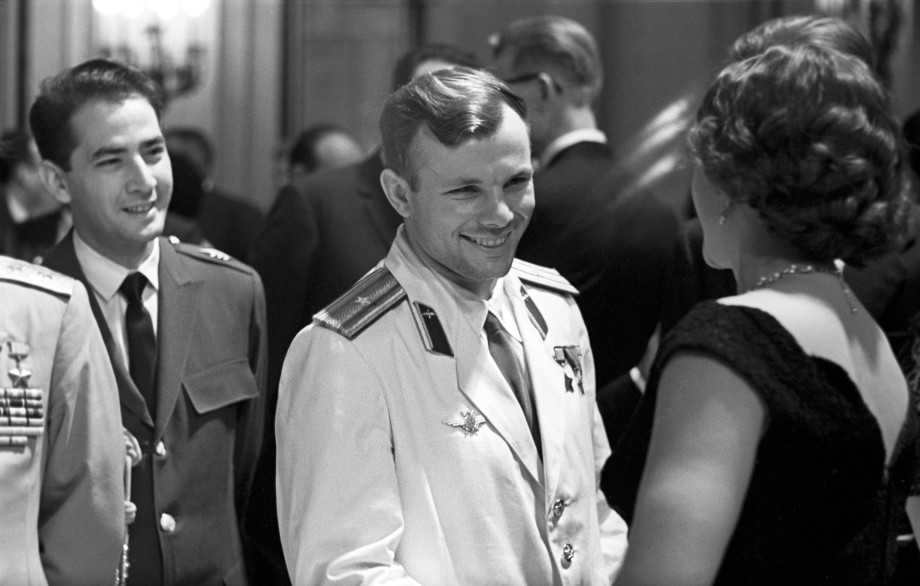
Photo: Valentin Sobolev/TASS
Yuri Gagarin
“Simply the first” – that’s how one could succinctly describe the achievement of Yuri Gagarin. It is well known that he became the inaugural explorer in the annals of human history to venture into space.
On April 12, 1961, he embarked on his historic journey aboard the spacecraft “Voskhod-1,” which lasted 1 hour and 48 minutes. The news of his extraordinary feat spread across the globe instantaneously, cementing Yuri Gagarin’s status as a legendary figure.
Following his journey, he embarked on a global expedition, traversing more than 30 nations, where he was hailed as a trailblazing hero who dared to venture into uncharted territory. However, he humbly acknowledged, “Life demonstrates that the conquest of space will not be achieved by extraordinary individuals, but rather by ordinary individuals.”
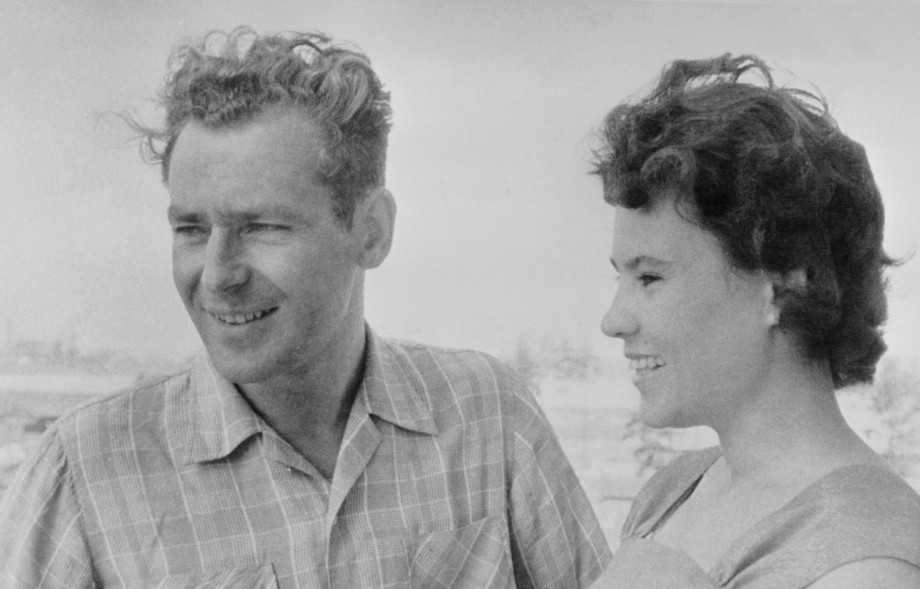
German Titov
German Titov, also known as Cosmonaut #2, achieved a historic milestone by completing the first long-duration space flight in history. He served as Yuri Gagarin’s backup and made his own journey into Earth’s orbit on August 6, 1961, shortly after Gagarin’s iconic flight. Titov piloted the Vostok-2 spacecraft, which set a new record for the longest space flight at that time.
The duration of Titov’s flight was 1 day, 1 hour, and 11 minutes. During this time, the spacecraft completed 17 revolutions around the Earth, covering a distance of over 700,000 kilometers.
German Titov was a pioneer in various aspects. He bravely volunteered to personally experience the effects of extended space travel on the human body, including the challenges of eating and sleeping in weightless conditions. Moreover, he was the first to capture breathtaking photographs of our planet from the vastness of space, alongside his numerous other groundbreaking discoveries during his remarkable 24-hour mission. Notably, German Titov holds the distinction of being the youngest astronaut, as he embarked on this historic journey at the tender age of 25, a record that remains unbroken in the annals of space exploration.
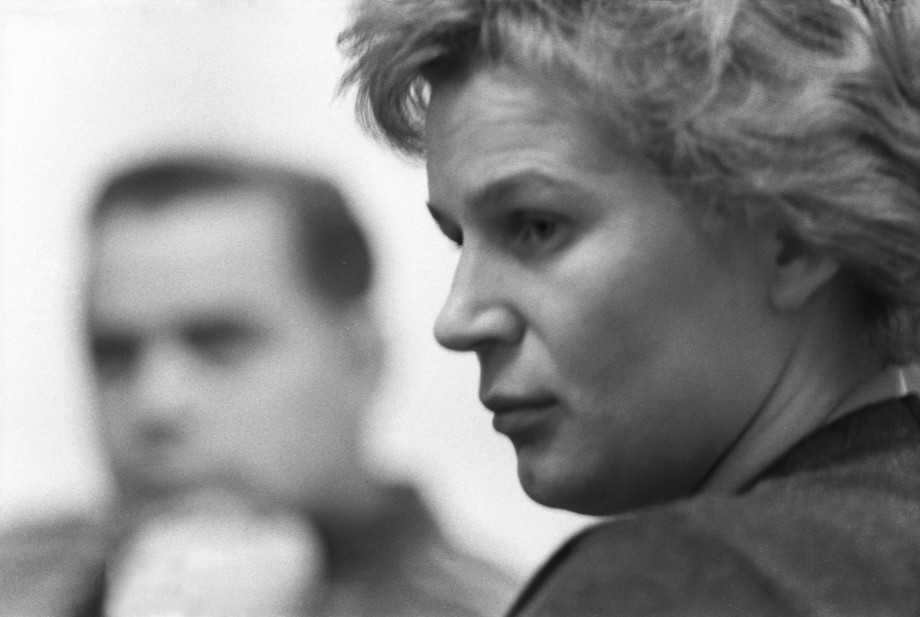
Photo: TASS
Valentina Tereshkova
On June 16, 1963, just two years after Yuri Gagarin’s historic flight, the world witnessed the first-ever space voyage by a woman. “This is Seagull. Can you hear me? Over,” Valentina Tereshkova, the world’s first female cosmonaut, transmitted from her distant orbit, capturing the attention of the world. She spent a total of 2 days, 22 hours, and 51 minutes in space.
To this day, Valentina Tereshkova remains the only woman who has ventured into space on her own. All other female astronauts have embarked on their space journeys as part of a crew.
Valentina Tereshkova’s flight could have ended tragically, a fact that was kept classified for many decades. The ship had an error in its automatic program, causing its orbit to increase with each revolution. This meant that the ship may not have been able to return to Earth at all. However, Tereshkova noticed this error and, with guidance from Earth, was able to correct it.
Valentina Tereshkova also holds another record. A year after her flight, she and her husband, cosmonaut Andriyan Nikolayev, proved that a man and a woman who have been in space can give birth to a perfectly healthy child, as they welcomed their daughter into the world.
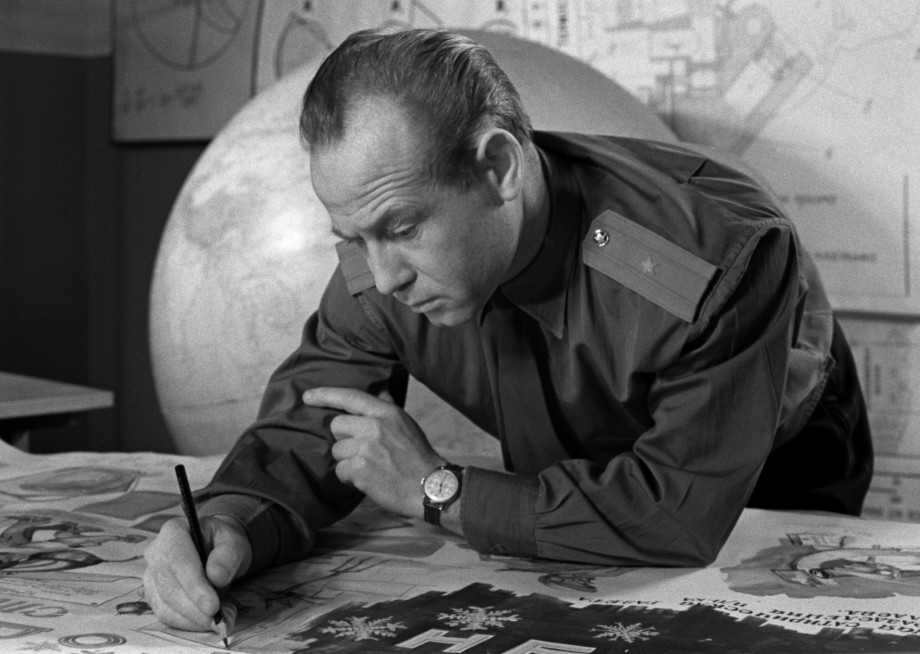
Photo: Valentin Cheredintsev/TASS
Alexei Leonov
Alexei Leonov is renowned worldwide as the first astronaut to venture into outer space, demonstrating that humans can function outside of a spacecraft. This momentous event occurred on March 18, 1965, with the initial spacewalk lasting 23 minutes, during which the cosmonaut spent 12 minutes outside the ship.
This incredible achievement nearly cost him his life. While in space, Leonov’s spacesuit became inflated due to air pressure, hindering his return to the spacecraft. It was only after he successfully deflated the excess air from his suit that he was able to re-enter the hatch.
However, that’s not the end of the story. On this particular voyage aboard the “Voskhod-2” spacecraft, there were a total of seven mishaps, with the most serious being the failure of the control system. Despite these unexpected challenges, the crew managed to overcome them and successfully return to Earth. The specific details of this mission remained classified for a significant period of time.
Ten years later, Leonov embarked on his second space journey as the commander of the Soyuz-19 crew. After spending nearly six days in space, the Soyuz spacecraft accomplished a historic feat by successfully docking with the American Apollo spacecraft. This marked the first-ever docking between spacecraft from different countries.
Alexei Leonov is also renowned for his talent as an artist, immortalizing his memories through vibrant drawings. Some of his artwork even appeared on Soviet postage stamps, while others are displayed in the prestigious Tretyakov Gallery.
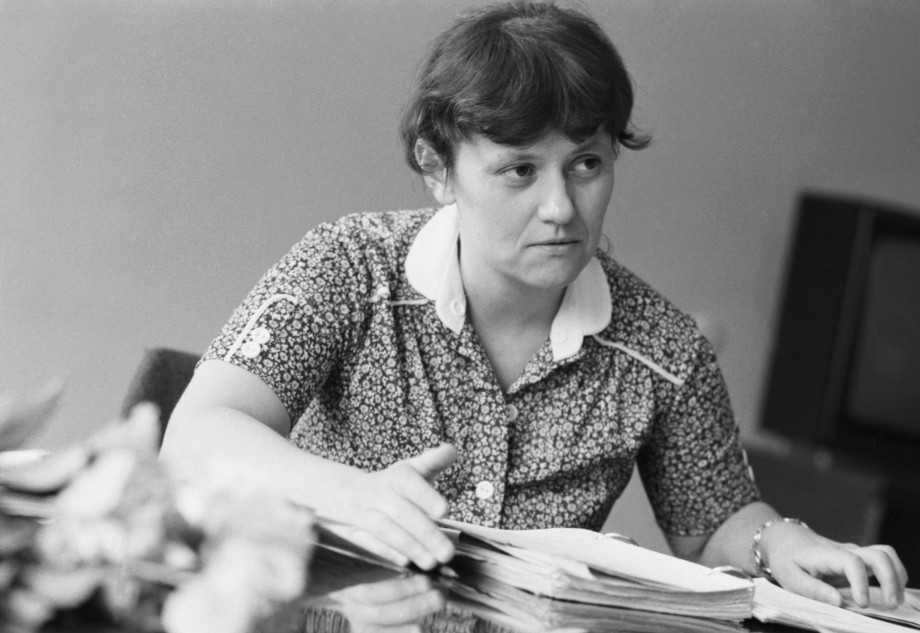
Photo: Pushkarev Albert/TASS
Svetlana Savitskaya
Svetlana Savitskaya holds the distinction of being the first woman to ever complete a spacewalk.
She has achieved this feat twice. Her first spaceflight took place from August 19 to 27, 1982. Serving as a cosmonaut-researcher on the Soyuz T-7 spacecraft, she journeyed to the Salyut orbital station and spent over 7 days there.
Svetlana Savitskaya embarked on her second spaceflight from July 17 to July 29, 1984. This mission lasted just under 12 days.
July 25th marked a historic moment as she became the pioneering woman to embark on a spacewalk. Collaborating with cosmonaut Vladimir Dzhanibekov, she conducted groundbreaking scientific experiments, setting a remarkable record of 3 hours and 35 minutes spent in the vastness of outer space.
What made her two missions even more significant was the fact that she shattered the long-held belief in the space industry that women were medically unfit for space travel.
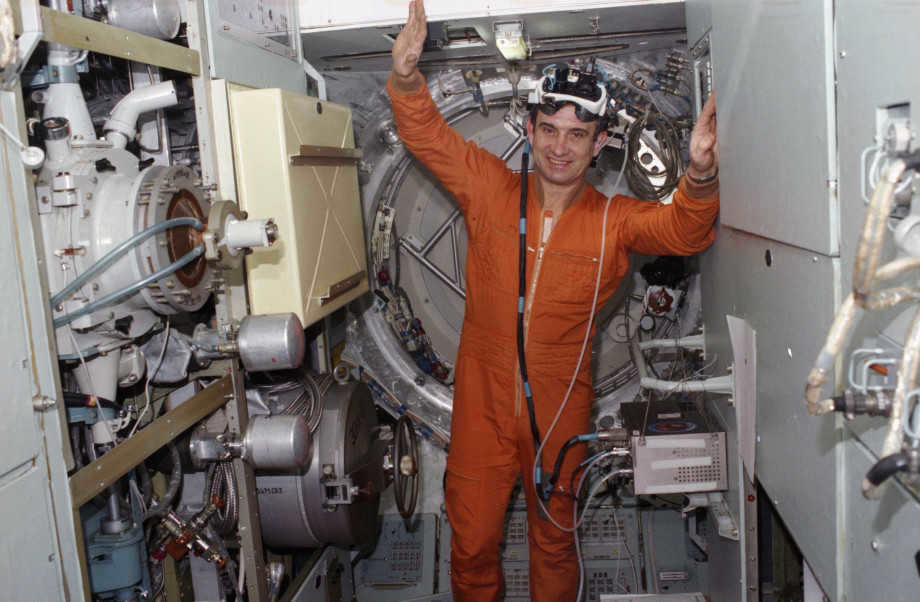
Photo: Pushkarev Albert/TASS
Valery Polyakov
Valery Polyakov, a Russian cosmonaut, holds the world record for the longest duration in space – 437 days and 18 hours. He embarked on his space journey on January 8, 1994, concluding it in March 1995. This remarkable record remains unbroken to this day.
During his mission, Polyakov conducted extensive medical and biological research aimed at enhancing the health and performance stability of cosmonauts during long-duration space flights. He also developed innovative methods and tools to mitigate the adverse effects of weightlessness on the human body.
Throughout his life, Valery Polyakov completed only two space flights, but accumulated a total of 678 days and 16 and a half hours in space, placing him second in terms of overall time spent in the vacuum of space among Russian cosmonauts.
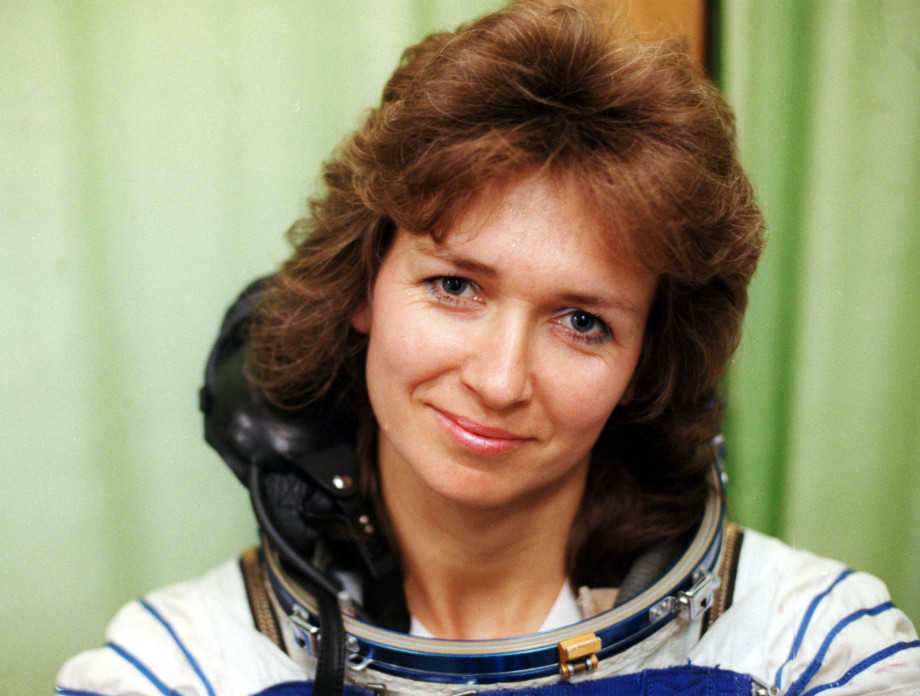
Photo: Albert Pushkarev/TASS
Elena Kondakova
Elena Kondakova made history in Russia as the first woman to go to space. Following in the footsteps of Tereshkova and Savitskaya, she became the third woman in Russian cosmonautics.
She holds the world record for the longest duration in orbit by a female astronaut – 169 days, 5 hours, and 35 seconds. Her inaugural space mission took place on October 4, 1994, as part of the Soyuz TM-20 expedition. After spending 5 months on the Mir space station, she safely returned to Earth on March 22, 1995.
Only a few individuals are aware that she, along with her fellow crew members, had to endure a life-or-death situation aboard the Mir station. The power system completely malfunctioned due to the deteriorating condition of the solar batteries. As a result, the control panels shut down and communication with the Central Control Center was lost, leaving the station adrift without any means of control. However, the most alarming issue was the increasing concentration of carbon dioxide, posing a serious threat to the astronauts’ health and lives. Thanks to the crew members’ professionalism, they managed to reconfigure the solar batteries, gradually restoring all elements of the energy system, and continued their work in orbit without further incidents.
In total, Elena Kondakova embarked on two space missions before transitioning from astronautics to politics.
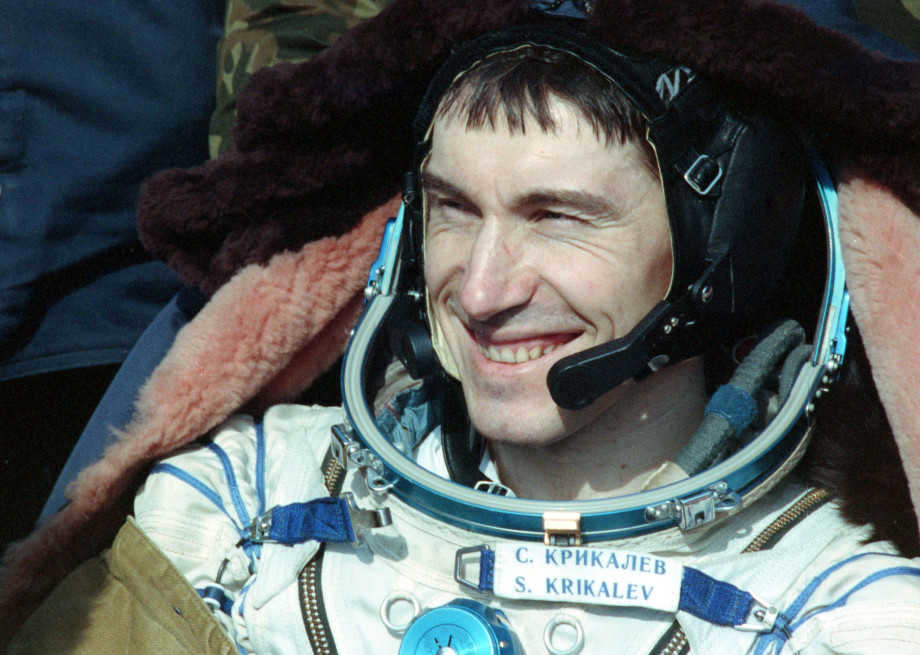
Photo: Albert Pushkarev / TASS
Sergei Krikalev
Russian cosmonaut Sergei Krikalev held the record for the longest duration spent in space (803 days) for a period of 10 years starting in 2005, until cosmonaut Gennady Padalka broke this record. Additionally, Krikalev holds the record for the most number of flights among Soviet and Russian cosmonauts – a total of six times.
Interestingly, in 1991, Krikalev embarked on his second space mission from the USSR and returned to Russia. This marked the beginning of his six flights. Overall, he spent a total of 16 years in space, from 1989 to 2005.
This cosmonaut, Krikalev, is truly versatile. He has a range of hobbies including scuba diving, skiing, windsurfing, and tennis. Additionally, he is an innovator in the field of photography, introducing 3D technology to his space photography. Furthermore, he has created a captivating collection of photographic works titled “Painting of the Creator” which were captured from the vantage point of near-Earth orbit.
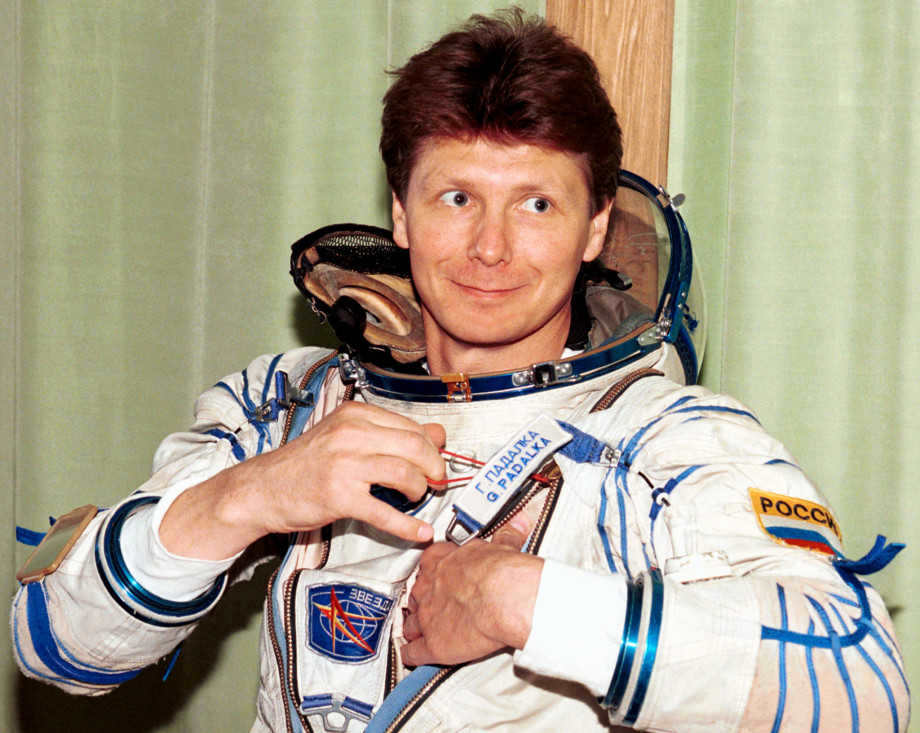
Photo: Roman Denisov/TASS
Gennady Padalka
Russian astronaut Gennady Padalka holds the record for the longest time spent in space: he has accumulated a total of 878 days over five spaceflights. Additionally, he has spent a cumulative 38 hours and 26 minutes working in outer space.
Gennady Padalka is renowned for his sense of humor: during his missions, he would often choose to sleep on the ceiling of the space station, and he even had a playful “guide to meeting aliens” that he shared with journalists.
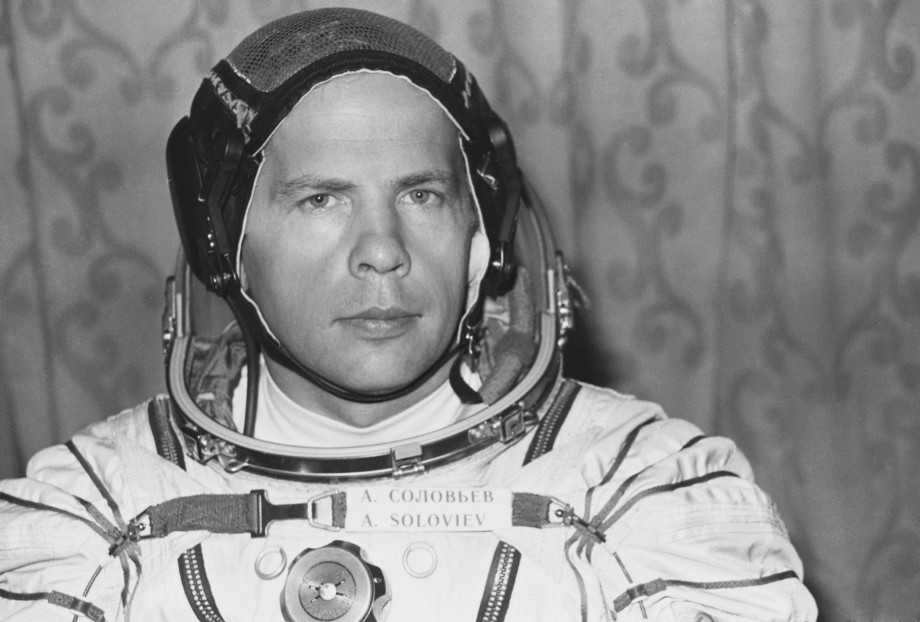
Photo: Albert Pushkarev / TASS
Anatoly Solovyov
Anatoly Solovyov, a cosmonaut, holds the world record for the most spacewalks and total duration of work outside the spacecraft. He has ventured into interstellar space a remarkable sixteen times, accumulating a total of 82 hours and 21 minutes of extravehicular activity.
According to Solovyov, the environment in space is incredibly serene. Even while conducting tasks in a spacesuit, one experiences a near-complete silence. A spacesuit functions as a miniature spaceship, equipped with vital life support systems such as oxygen supply, CO2 and water utilization, and more. This necessitates the use of two fans, which emit a barely perceptible noise, akin to a faint rustling sound behind one’s back.
Anatoly Soloviev’s achievement is widely recognized, not only by his fellow countrymen. In the Hollywood film “Gravity,” the protagonist, played by George Clooney, expresses his aspiration to surpass Soloviev’s record. However, Soloviev himself has a strong aversion to this movie due to its disrespectful portrayal of Russian cosmonautics. In an interview, he stated, “I would screen this film in high schools and universities so that students could identify its inaccuracies. If you can spot 10 or 25 mistakes in this movie, you’ll earn a passing grade in physics.”
Sign up to receive one of our most popular articles delivered to your inbox daily. Stay connected with us on Facebook and VKontakte.
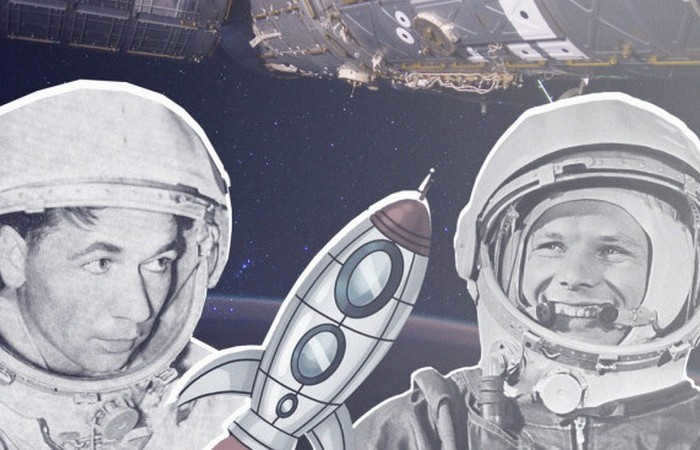
It’s quite unbelievable that the USSR achieved such remarkable success in space exploration: their very first attempt with human involvement was an immediate triumph! In the midst of the intense rivalry between the Soviet Union and the United States, there was a strong temptation to fabricate achievements in order to maintain national prestige. This is why there are dissenters from the official account among dissidents of that era and skeptics in the present day. It cannot be completely certain that there were no previous individuals who tragically lost their lives in space prior to Gagarin’s historic flight.
Cosmonaut Bondarenko passed away in March 1961 while on duty
In the early 1990s, when access to formerly classified archives became available, researchers began to delve into the Soviet space theme, dispelling rumors. Through the research of A. Zheleznyakov and A. Pervushin, it was revealed that only one cosmonaut had tragically lost his life prior to Gagarin’s historic flight.
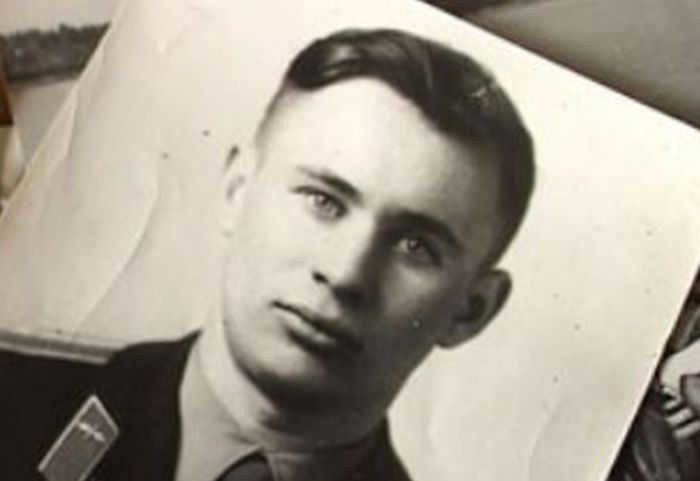
Because all the information regarding the death of a member of the original group of astronauts was classified, many individuals were inclined to believe in alternative theories.
However, the reality is that Senior Lieutenant Bondarenko passed away on Earth, specifically at the Institute of Aviation Medicine. His death occurred during an experiment that aimed to simulate space conditions. The baro-chamber in which the experiment took place had an abnormally high concentration of oxygen and maintained a high level of pressure. These conditions led to the rapid spread of a fire when the astronaut accidentally threw a cotton ball soaked in alcohol onto a hot electric stove. He had been using the cotton ball to wipe his skin while removing medical sensors.
The lack of information about this incident contributed indirectly to a similar tragedy involving American astronauts in 1967. While the Apollo mission was being readied at the Kennedy Space Center, a massive fire broke out during testing, resulting in the loss of three lives. Although extensive safety instructions had been prepared, totaling over 200 pages, the risk of fire had not been considered, leading to this fatal oversight.
Vladimir Ilyushin, the astronaut who preceded Gagarin, experienced an unfortunate landing in China and was subsequently apprehended
In 1961, an astonishing report appeared in the American leftist publication Daily Worker, suggesting that the initial journey into outer space was not undertaken by Gagarin, but by V. Ilyushin. Furthermore, this historic event occurred not on April 12th, but five days prior.
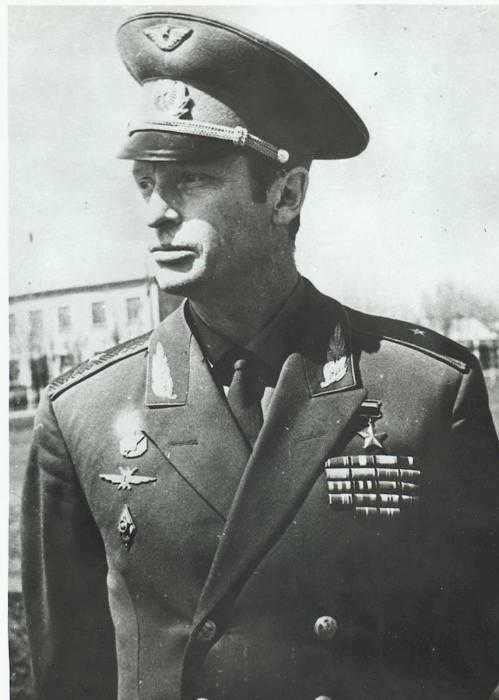

The USSR justified the presentation of false information to the global public by claiming that Vladimir Ilyushin had crash-landed in China. He was allegedly held captive there and forced to share classified information about Soviet space achievements. This was the reason why Yuri Gagarin was introduced to the public, as there were rumors that he was not actually the first.
In truth, V. Ilyushin never went to space and had no such aspirations. He was a test pilot and an exceptional aviator who held numerous world records and received many accolades. Vladimir’s father, Sergey, was a renowned aircraft designer known for the Il series of airplanes.
While in the sky, Vladimir Ilyushin possessed an invincibility, maintaining a sharpness of mind even in the most challenging circumstances. However, when on solid ground, an accident became inevitable – it transpired during the summer of 1960, when the pilot’s health notably declined. Determined to seek alternative Chinese medicine, he embarked on a journey to Hangzhou. Thus, the myth arose that V. Ilyushin was subjected to unfavorable conditions by the Chinese following a strenuous landing.
Italian radio enthusiasts called Judica-Cordiglia provided a lot of conflicting information that caught the attention of Western newspapers. They claimed to have repeatedly picked up signals from outer space that included the sound of a human heart beating, labored breathing, Morse code, distress calls, and even conversations between astronauts and their space station. A. Belokonov (also spelled Belokonev) was said to be one of the unfortunate victims of this system, as secretly witnessed by the Italians. According to several newspapers, such as Reader’s Digest and Corriere della Sera, it was believed that this Soviet cosmonaut had suffocated during the flight.


Further enhancing the plausibility of this account was the publication of a photograph in Ogonyok magazine, which depicted Belokonev and his colleagues preparing for the harsh conditions of space. While the preparation was showcased, the aftermath was not, leading Western journalists involved in the space industry to speculate that the failure was concealed behind the iron curtain, resulting in the astronauts’ demise. This was the logical progression of events according to these journalists.
In reality, there was indeed an individual with the name Belokonev who had connections to the field of cosmonautics. However, he never embarked on a single spaceflight as he served as an equipment tester. Furthermore, he lived for nearly 30 years after the purported space tragedy and even continued working at the Institute of Space Medicine in the 70s. He passed away in 1991.
Ivan Kachur passed away due to a launch explosion in 1960
As reported by Reuters, among the “zero” cosmonauts was Ivan Kachur, a colleague of Alexei and an equipment tester with expertise in high-altitude testing that involved breathing oxygen under extreme pressure. According to Western media, the cosmonaut lost his life in an explosion during the launch of a ballistic missile in the autumn of 1960.

Indeed, a launch took place in September 1960, which unfortunately ended in failure due to an explosion. However, it is important to clarify that only two dogs were on board during this mission, and tragically, they did not survive. Additionally, it is worth noting that Ivan Kachur, the equipment tester, had already been discharged from the Soviet army prior to this event on April 28. He had returned to his hometown in the Ivano-Frankivsk region of the Ukrainian SSR.
According to the news agency “Reuters,” another test technician named Gennady Zavodovsky was tragically lost in space during the 1960s. The incident was attributed to a malfunction in the spacecraft’s orientation system, which caused the ship to drift further away from Earth instead of approaching it.
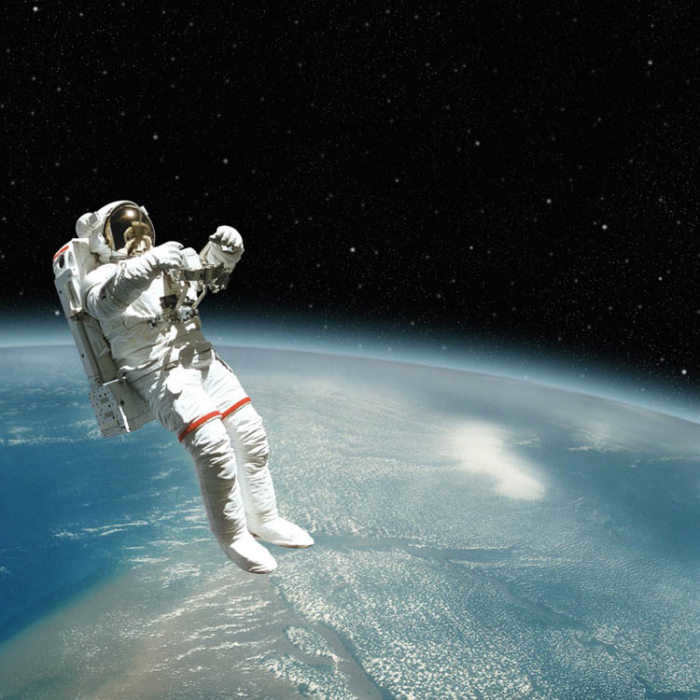
Actually, Zavodovsky, a test pilot, never had the opportunity to go to space before Gagarin or at any other time. However, his contributions to the development of cosmonautics were still significant – he specialized in testing breathing techniques at high altitudes and under pressure differences. His efforts were recognized and documented in the Test Pilot’s Book of Honor.
In 2002, Zavodovsky passed away and was laid to rest in the Rakitki cemetery near Moscow.
Cosmonautics historian A. Peslyak notes that the work of testers on Earth was incredibly challenging and perilous. Many soldiers who were involved in the development of Soviet cosmonautics sacrificed their health. During the 10-year period leading up to the triumphant exploration of space by the USSR, 20% of the testers were deemed unfit for further service, and approximately 16% of the commission were not allowed to continue working in the conditions of “Earth space” at all. The average life expectancy of the testers did not exceed 50 years.
If you enjoyed the article, please show your support by clicking here:
We are all children of the Galaxy, although not all of us have the opportunity to venture into outer space. Today marks the 61st anniversary of the first human space flight. Let us remember the 9 cosmonauts who have forever left an indelible mark on our souls.
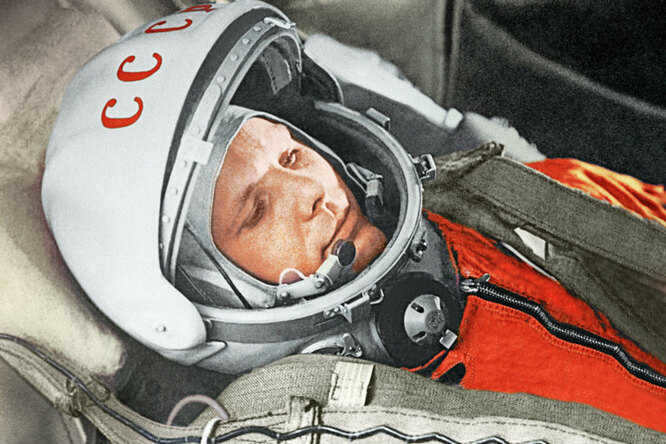
Yuri Gagarin
Yuri Gagarin will always hold a special place in our hearts as the pioneer who first laid eyes on our Earth from space on April 12, 1961, and marveled at its beauty. His historic 108-minute journey aboard the Vostok 1 spacecraft earned him the prestigious title of Hero of the Soviet Union. Additionally, Gagarin was presented with a Volga car bearing the numbers 12-04 YuAG, representing the date of his groundbreaking flight and his initials as the first cosmonaut.
German Titov
German Titov, the second Soviet cosmonaut and the youngest man in space, achieved a groundbreaking feat by completing the longest space flight at that time – lasting over a day.
On August 6, 1961, the 25-year-old German Titov, who had served as Yuri Gagarin’s understudy, embarked on the spacecraft “Vostok-2”. During this mission, the young cosmonaut successfully orbited the Earth 17 times, covering a distance of seven hundred thousand kilometers. Notably, German also conducted tests on the manual control system of the spacecraft, executed maneuvers, and captured the first photographs of Earth from space. Despite the challenges of weightlessness, Titov managed to have lunch, dinner, and even get some sleep during his historic journey.
Herman performed exceptionally well during his space mission and was awarded the prestigious title of Hero of the Soviet Union. However, he will always be remembered as the second cosmonaut in history, as there can only be one first. Titov dedicated many years to the space industry and unfortunately passed away on September 20, 2000, due to a heart attack.
Valentina Tereshkova
Valentina Tereshkova, the first woman to venture into space, holds the distinction of being the only female cosmonaut to have flown solo. While other women have journeyed to space, they have always done so as part of a crew. Valentina’s historic flight took place on June 16, 1963 aboard the “Vostok-6” spacecraft and lasted an impressive 2 days, 22 hours, and 51 minutes. During this time, her spacecraft completed a total of 48 orbits around the Earth. The extensive research conducted during Valentina’s nearly three-day mission has had a lasting impact on the fields of medicine and biology. It is worth noting that, simultaneously with Vostok 6, the Vostok 5 spacecraft, commanded by cosmonaut Vladimir Bykovsky, was also in orbit.
Despite her singular spaceflight, Valentina Tereshkova remained an active member of the cosmonaut corps until April 1997. In recognition of her groundbreaking three-day mission, she was awarded the prestigious title of Hero of the Soviet Union. Today, Valentina Tereshkova serves as a deputy in the State Duma of the Russian Federation.
Andriyan Nikolayev
Andriyan Nikolayev is most notably remembered as a pioneering cosmonaut who accomplished the remarkable feat of working in orbit without the use of a spacesuit. Additionally, he is also renowned for his “star marriage” with Valentina Tereshkova. During his inaugural spaceflight, Andriyan achieved another unprecedented milestone by detaching himself from his seat and experiencing weightlessness as he freely floated in the spacecraft. On August 11, 1962, Andriyan embarked on the Vostok-3 spacecraft for an experimental joint mission alongside fellow cosmonaut Pavel Popovich, who piloted the Vostok-4 spacecraft.
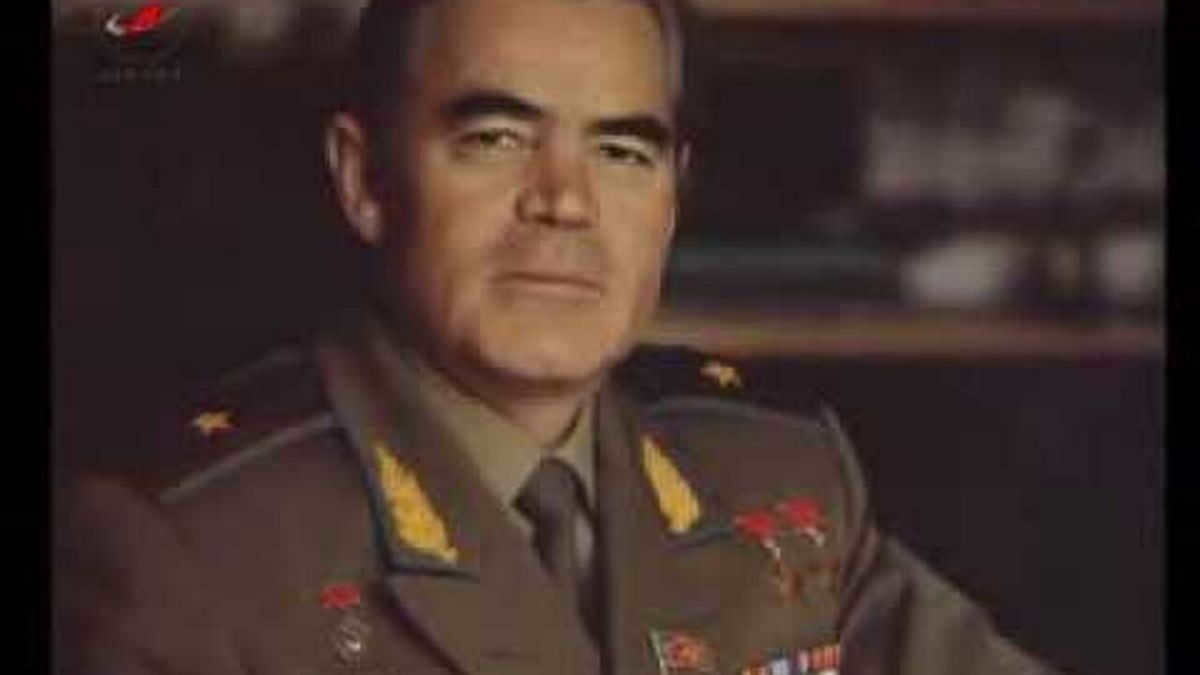
Andriyan Nikolaev spent a total of 94.5 hours in space. Once in orbit and after separating the spacecraft from the launch vehicle, Andriyan assumed manual control. During a joint flight, Nikolaev and Popovich conducted the first military experiment in space, focused on creating a satellite interceptor. “Vostok 4, piloted by Popovich, acted as the interceptor, while Vostok 3 played the role of the target. The two spacecraft came as close as 5 kilometers to each other.”
In 1963, the first ever “space marriage” was established by Andriyan Nikolaev and Valentina Tereshkova. They remained married for 18 years and were blessed with a daughter named Elena, who became the world’s first “space child”. Sadly, on July 3, 2004, Andriyan Nikolaev, a twice Hero of the Soviet Union, passed away from a heart attack. He lived just two months shy of his 75th birthday.
Vladimir Komarov
This is a heartbreaking chapter in the annals of space exploration. Vladimir Komarov, a two-time Hero of the Soviet Union, held the position of commander for the inaugural crew of the Soviet spacecraft, which was launched on October 12, 1964. Moreover, he had the distinction of being the first individual to venture into space on two separate occasions. Tragically, he also became the first person to lose his life during a space mission.
Vladimir Komarov embarked on his inaugural space mission on October 12-13, 1964 onboard the Voskhod-1 spacecraft. In order to accommodate a crew of three, Sergei Korolev was assigned by Nikita Khrushchev to revamp the single-seat Vostok. Consequently, the Vostok was transformed into the Voskhod, spacesuits were discarded to conserve cabin space, and for the first time in history, the crew launched into space without ejection seats. Additionally, this marked the debut of a soft landing system. Apart from commander Vladimir Komarov, the crew comprised engineer Konstantin Feoktistov and doctor Boris Egorov. The mission lasted 24 hours, 17 minutes, and 3 seconds, with the spacecraft completing 16 orbits before safely landing. Interestingly, during the Voskhod-1’s orbit, there was a change in leadership in the country. The cosmonauts, who had launched under Nikita Khrushchev, reported their success to Leonid Brezhnev.
April 23, 1967 saw the launch of the brand new Soyuz-1 spacecraft by Vladimir Komarov. Unfortunately, this mission was plagued with technical issues, leading to a series of abnormal situations. Eventually, Komarov was instructed to make an early landing. On April 24, the spacecraft successfully navigated the most challenging phase of deceleration through the dense layers of the atmosphere, completely nullifying its initial velocity. However, at an altitude of seven kilometers, disaster struck as the ship’s parachute system failed. The main parachute failed to deploy, and the slings of the reserve parachute became entangled due to the craft’s rotation. The ship crashed into the ground at high speed, igniting upon impact.
Konstantin Feoktistov was an unconventional man who embarked on his maiden flight before officially joining the cosmonaut squad. It was not until 1968 that he was formally enlisted. What’s more, he actively contributed to the development of the Voskhod multi-person spacecraft, in which he made his space voyage on October 12, 1964, alongside fellow cosmonauts Vladimir Komarov and Boris Egorov.
Konstantin made the choice to embark on the construction of spacecraft when he was just nine years old. This decision was sparked by his older brother Boris who brought home a book called “Interplanetary Travel” authored by Yakov Perelman. Konstantin Feoktistov dedicated his career to working at Sergei Korolev’s Design Bureau No. 1, where he actively participated in the development of the first artificial Earth satellite. Additionally, he played a crucial role in leading the design process of the Vostok spacecraft. Following a successful flight, Feoktistov took on the prestigious role of being the chief designer responsible for the creation of the Soyuz, Soyuz T, Soyuz TM, Progress, Progress-M, as well as the Salyut and Mir orbital stations.
Although Feoktistov continued to be a member of the cosmonaut team until 1987, he never had the opportunity to journey into space again. This esteemed individual, who was recognized as a Hero of the Soviet Union, passed away on November 21, 2009, at the age of 84.
Alexei Leonov
Alexei Leonov is renowned for being the pioneering individual to venture into outer space on March 18, 1965. The astronaut spent a total of 12 minutes outside the spacecraft. During this period, Leonov’s space suit expanded to such an extent that he was unable to re-enter the ship. Remarkably, Leonov remained composed in this dire situation and skillfully released the excess pressure from his suit, enabling him to ultimately return to Voskhod-2. In recognition of his successful completion of the space mission, Alexei Leonov was bestowed with the esteemed title of Hero of the Soviet Union.
Alexei Leonov undertook his second space mission alongside Valery Kubasov in 1975. Serving as the commander of the Soyuz-19 spacecraft, Leonov participated in a joint venture with the Americans under the Soyuz-Apollo program. This marked the momentous occasion of two spacecrafts from different nations docking for the very first time. Following this remarkable flight, Leonov gained fame not only within the USSR, but also in the United States. To this day, Americans recall how our cosmonaut proposed a toast of Russian vodka in orbit. However, the truth is that the containers labeled with vodka stickers actually contained borscht.
On October 11, 2019, Alexei Leonov passed away at the age of 85.
Anatoly Solovyov embarked on his inaugural space journey at the age of 40, following 12 years of rigorous training. On June 7, 1988, he assumed the role of crew commander aboard the Soyuz TM-5 spacecraft, accompanied by Russian cosmonaut Viktor Savinykh and Bulgarian Alexander Alexandrov. In recognition of this mission, he was bestowed with the prestigious title of Hero of the Soviet Union.
The renowned cosmonaut gained widespread acclaim when he set a world record by venturing into outer space on 16 separate occasions, accumulating a total duration of 78 hours and 48 minutes for all his extravehicular activities. Throughout his career, Anatoly successfully completed 5 orbits around the Earth. Collectively, his spaceflights amassed an impressive 651 days in space.
Gennady Padalka
Gennady Padalka, a Russian astronaut, holds the impressive record for the longest total duration spent in space, which amounts to 878 days. This record was achieved on June 29, 2015, surpassing the previous record of 803 days held by fellow cosmonaut Sergey Krikalev.
Padalka’s first venture into space occurred on August 13, 1998, when he commanded the Soyuz TM-28 spacecraft alongside Sergei Avdeev and Yuri Baturin. Throughout his career, Padalka embarked on a total of five space flights, with ten extravehicular activities performed during these missions. His final spacewalk took place on August 10, 2015.
Gennady Padalka, a Hero of the Russian Federation, has a playful attitude towards his surname and often makes jokes about it. One interesting aspect is that Gennady never trims his hair while in space. Given the extended duration of his stays in orbit, he must have had a rather exotic appearance. On one occasion, Padalka humorously mentioned to journalists that there is a specific protocol for interacting with extraterrestrial beings. This joke quickly gained traction and was widely shared by the media.
The network edition of Novy Ochag is the online publication that provides a wide range of articles and news on various topics. It is founded by “Fashion Press” LLC, with the following address: 119435, Moscow, Bolshoi Savvinsky per. 12, str. 6, floor 3, room II. The editorial office can be reached at the same address. The Editor-in-Chief of Novy Ochag is Natalia Rodikova. For any inquiries or information, please contact the editorial office via email at [email protected] or by phone at +7 (495) 252-09-99. The content of Novy Ochag is intended for readers aged 16 and above. The network edition is registered and regulated by the Federal Service for Supervision in the Sphere of Communications, Information Technologies and Mass Media. The registration number and date of decision on registration are series EL No. FS 77 – 84131 dated November 09, 2022.





